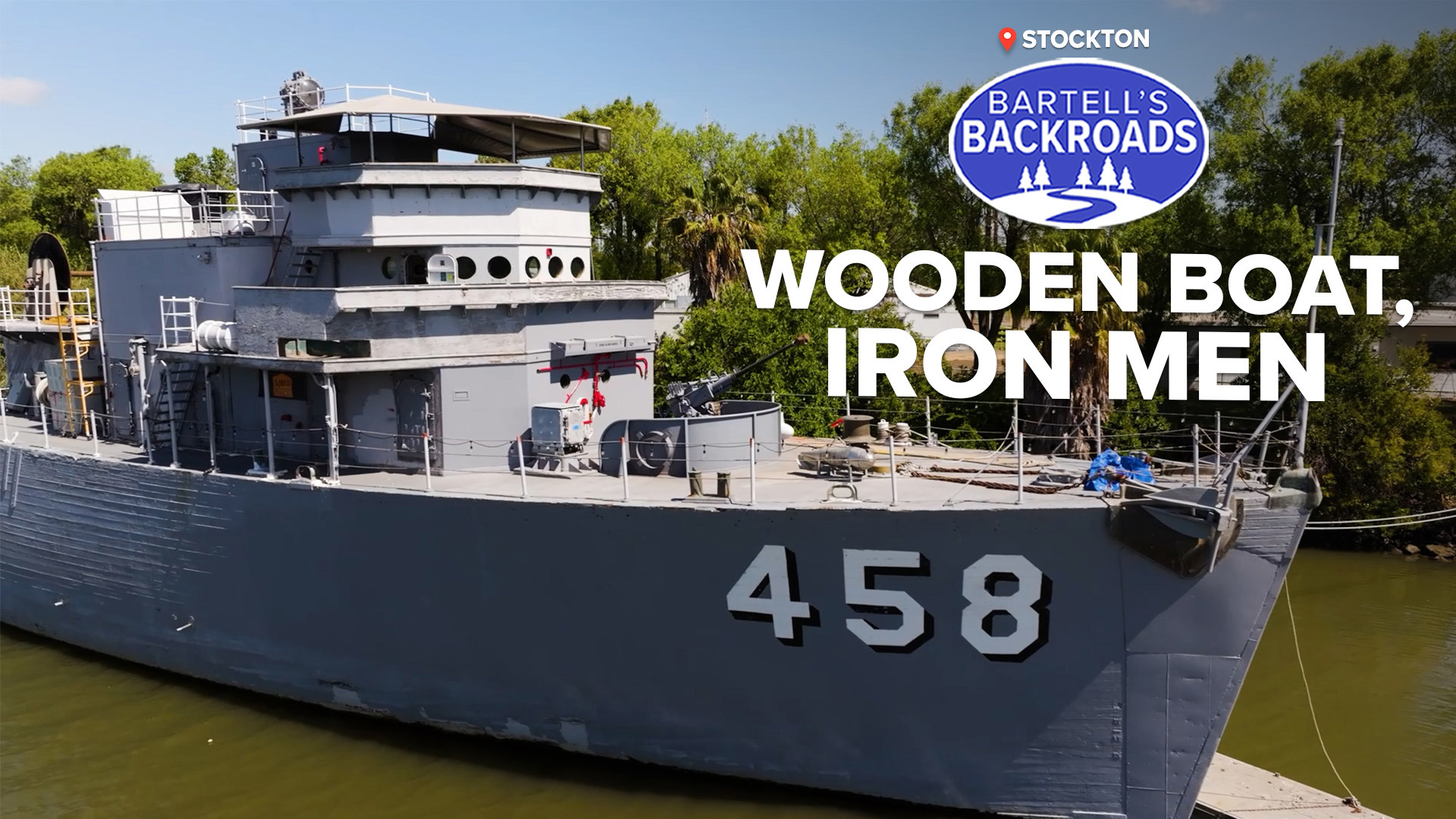STOCKTON, Calif. — Docked along the San Joaquin River is a rare naval ship allowing curious civilians aboard. It’s a wooden warship under restoration by the Stockton Maritime Museum.
Museum president David Rajkovich says sophisticated enemy mines had the technology to detect and destroy metal warships towards the end of WWII.
“The mines were designed to detect ferrous metals. These Soviet mines could detect ships passing by and detonate," said Rajkovich.
The U.S. Navy built a fleet of wooden minesweeping ships known as the MSO (Mine Sweeper Ocean) Aggressive Class to locate those metal detecting mines.
“101 of them were built concurrently across the country, including three of them built right here in Stockton. This is the largest warship built in Stockton,” said Rajkovich.
Of the 101 built, only one MSO remains in the Unites States and it's the USS Lucid, which is being restored by Rajkovich and a team of volunteers.
“The ship is 173 feet, rather small for an ocean-going vessel,” said Rajkovich.
TAKE A TRIP ON BARTELL'S BACKROADS:
► See an interactive map of everywhere John has visited on the backroads
► Watch all of the Backroads videos
► Follow John on Facebook
During special events the public is invited aboard see the restoration progress and learn about the ship’s unique features. Brass or aluminum was some of the only metal used on the ship because mines could detect anything magnetic.
“It was very strict on board. Sailors could not even have car keys in their pockets,” says Rajkovich.
The USS Lucid had a small crew of about 70 people. The living quarters were crammed and resources like water were rationed.
“Fresh water for bathing became a premium, so there were a lot of sweaty stinky men. It was probably a little ripe,” said Rajkovich.
Not only was it uncomfortable on the ship but also very dangerous. The USS Lucid would sail in front of metal battleships and use sonar to detect mines. If they found one, it was the sailors job to get close to the mine and safely detonate it.
“A lot of people said they were expendable, that is why they built so many of these ships, but it was important that they went ahead of the larger ships,” said Rajkovich.
The MSO Minesweepers were in service from the mid-50s to 90s before being decommissioned. The USS Lucid was saved from the scrapyard 12 years ago. When its restoration is finished, it will be moved to Stockton’s historic downtown waterfront, where it will showcase life on the ship and bravery of the sailors.
“These men were very proud of what they did. They came up with a saying: 'Where the fleet goes, we’ve already been. We may be a wooden ship, but we are iron men,'” said Rajkovich.
MORE NAVAL HISTORY ON THE BACKROADS: The Maritime Museum of San Diego, home to the deepest diving submarine in the world.



















